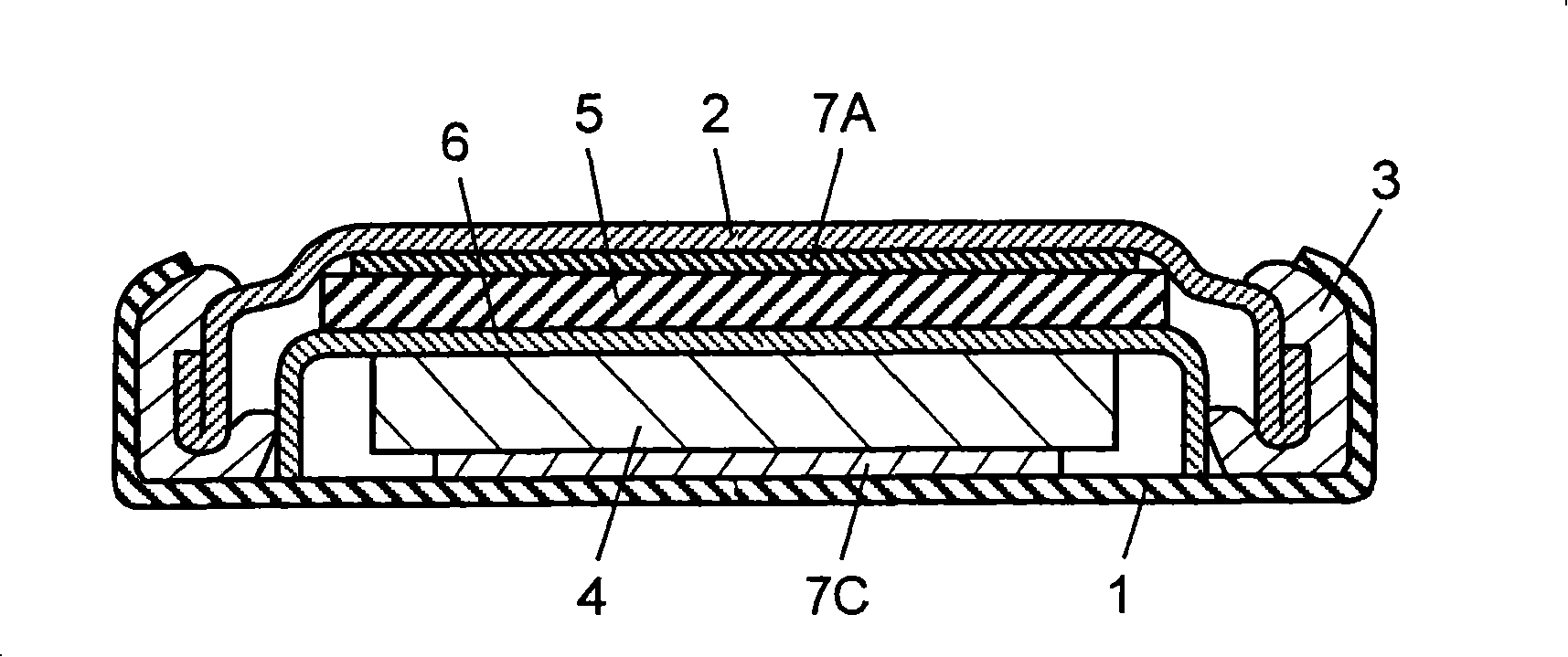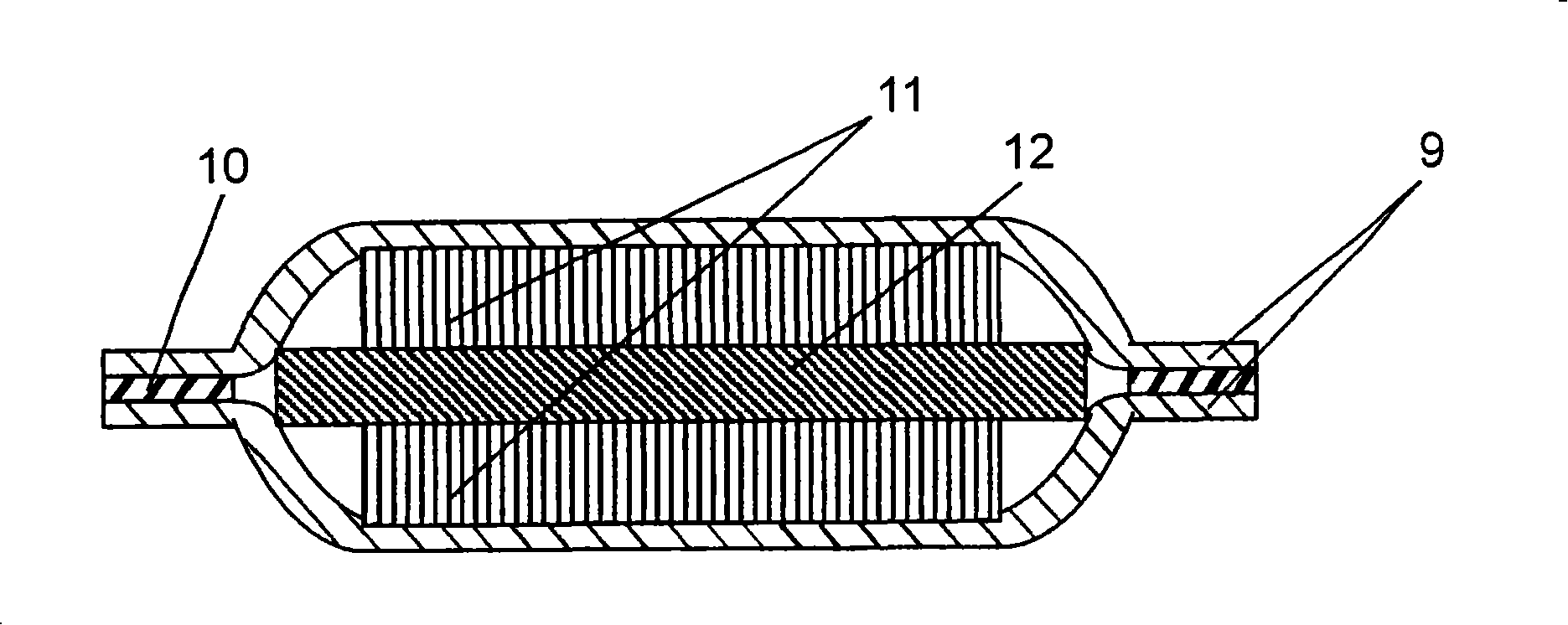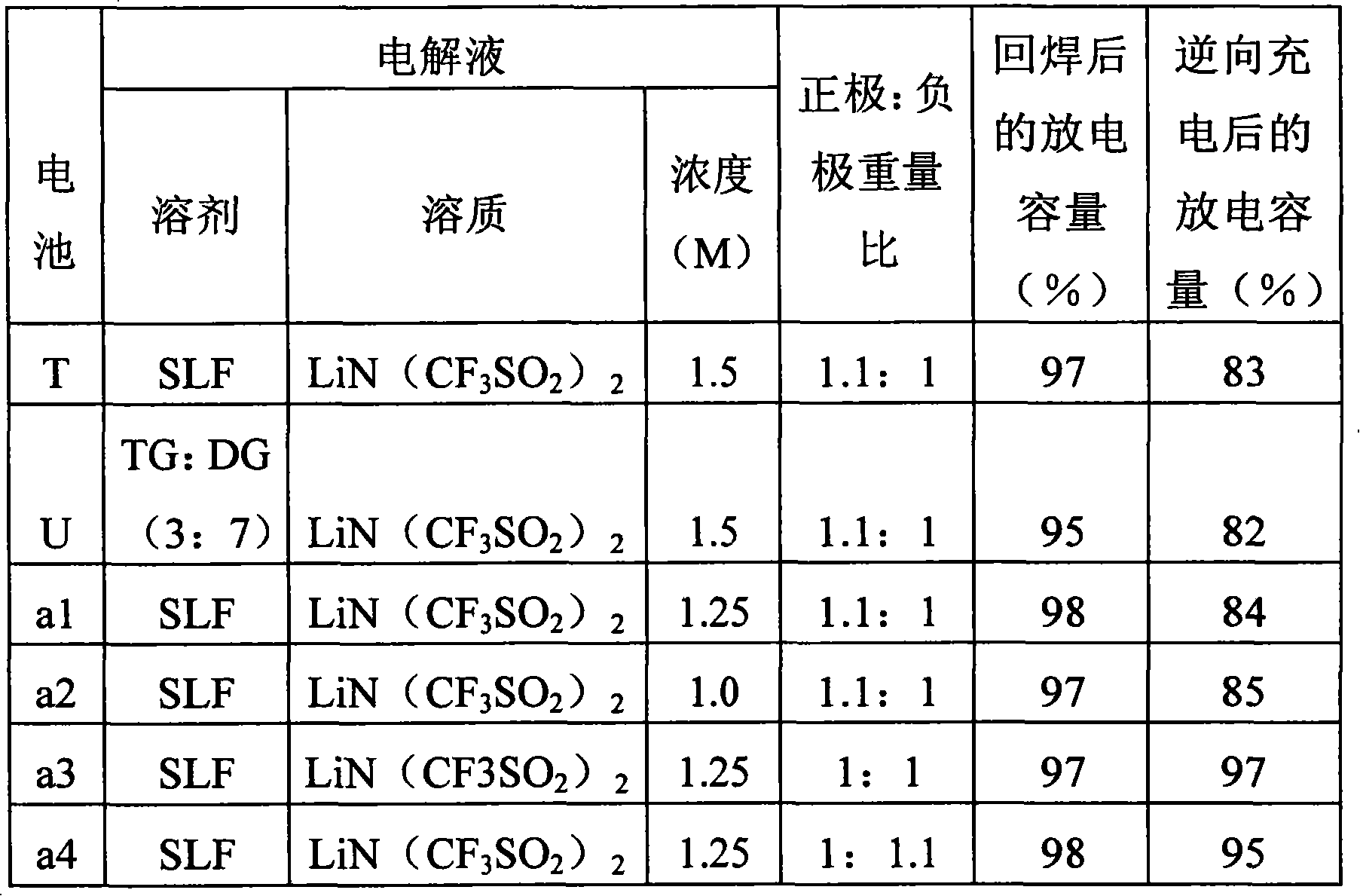Non-aqueous electrolyte secondary cell, manufacturing method thereof, and mounting method thereof
A non-aqueous electrolyte and secondary battery technology, applied in the direction of non-aqueous electrolyte storage battery, electrolyte storage battery manufacturing, secondary battery, etc., can solve the problems of time-consuming processing, difficulty, difficult to use manufacturing process, etc.
- Summary
- Abstract
- Description
- Claims
- Application Information
AI Technical Summary
Problems solved by technology
Method used
Image
Examples
Embodiment
[0044] Hereinafter, preferred embodiments of the present invention will be described. First, display the figure 1 Ni / SUS304 / A1 aluminum alloy plate was used for the positive electrode can 1 in the coin-type battery, and SUS316 was used for the negative electrode can 2, and the results of various active materials were studied. Hereinafter, the procedure for producing the battery A will be described first.
[0045] Mix LiNO at a molar ratio of 1:3 3 with MnO 2 , after pre-sintering at 260°C for 5 hours, and then sintering at 340°C for 5 hours to prepare lithiated lanthanum manganese oxide. Then, the aforementioned oxide was mixed with carbon black as a conductive agent and PTFE as a binder to prepare an electrode mixture. In addition, the mixing ratio was a ratio of 88:5:7 by weight. The aforementioned electrode mixture was mixed at 2 ton / cm 2 After forming into pellets with a diameter of 10 mm under pressure, they were dried in the air at 250° C. to prepare positive elect...
PUM
| Property | Measurement | Unit |
|---|---|---|
| boiling point | aaaaa | aaaaa |
| diameter | aaaaa | aaaaa |
| thickness | aaaaa | aaaaa |
Abstract
Description
Claims
Application Information
 Login to View More
Login to View More - R&D
- Intellectual Property
- Life Sciences
- Materials
- Tech Scout
- Unparalleled Data Quality
- Higher Quality Content
- 60% Fewer Hallucinations
Browse by: Latest US Patents, China's latest patents, Technical Efficacy Thesaurus, Application Domain, Technology Topic, Popular Technical Reports.
© 2025 PatSnap. All rights reserved.Legal|Privacy policy|Modern Slavery Act Transparency Statement|Sitemap|About US| Contact US: help@patsnap.com



